Project Batch: Second Batch of 2021
Project Number: 202102278057
Project Type: New Engineering Construction Project
Project Implementation Background
Embedded systems have a wide range of applications, and various core platforms for terminals are based on embedded systems, such as mobile phones and robots. To meet the broad demands of society and industry, universities have successively introduced embedded system courses, which have become one of the most popular and sought-after courses in various universities. At the same time, with the emergence and use of various new embedded system chips, new hardware kernels, hardware interfaces, and embedded operating systems, the development of embedded system courses is inevitably being promoted.
Currently, the knowledge points of embedded systems are quite numerous, mainly focusing on interface content, including GPIO, ADC, serial ports, parallel ports, SPI, and I2C, but there is relatively little knowledge about the overall framework of hardware and software and collaborative development.
In recent years, Huawei has launched the OpenHarmony embedded open-source operating system. In terms of embedded system teaching, it can combine the OpenHarmony open-source operating system with the HiSilicon Hi3861V100 development board to carry out the construction of embedded system courses, introducing the content of the OpenHarmony open-source operating system and the Hi3861V100 chip as teaching knowledge points, which has a positive promoting effect on the construction of embedded system courses. At the same time, establishing a teaching system for embedded systems based on the OpenHarmony open-source operating system and the HiSilicon Hi3861V100 chip also helps to promote the technology of the OpenHarmony open-source operating system and the HiSilicon Hi3861V100 chip and expand its development ecosystem.
Reform Ideas and Measures
1. Establishing Course Content Based on OpenHarmony + HiSilicon Hi3861 Embedded Chip
(1) Integrate embedded systems and OS, combining hardware and software, allowing students to comprehensively master embedded system knowledge.
(2) In terms of system characteristics, Hi3861 is a connected SOC that can perform edge-cloud collaboration and practice development in connection with mobile phones.
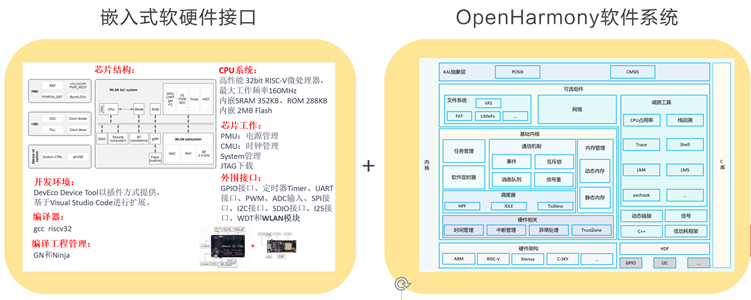
2. Establishing an OpenHarmony-Based Embedded System at Three Levels.
(1) Basic Teaching
Knowledge Points: Embedded hardware and software development and interfaces
Skill Points: Interface development combined with OpenHarmony embedded chips
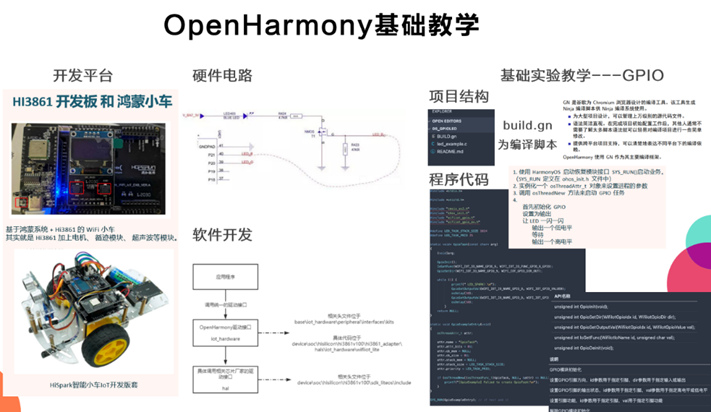
(2) Instance Teaching
Knowledge Points: Comprehensive development of embedded hardware and software
Skill Points: Development of embedded instance projects combined with OpenHarmony
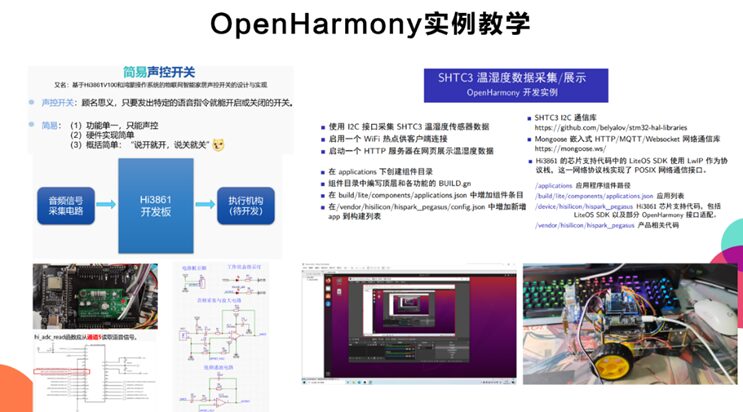
(3) Student Innovation Projects
Knowledge Points: Cultivating innovation capabilities in embedded project development
Skill Points: Proposing and implementing innovative embedded projects combined with OpenHarmony
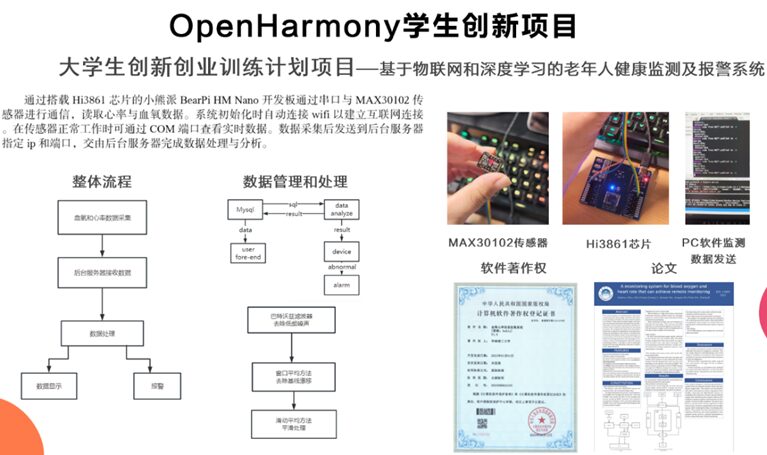
Project Results, Innovations, and Effects
The embedded system course is an interdisciplinary subject involving computer hardware and software. Its results and innovations in industry-academia cooperation are mainly reflected in the following aspects:
1. Introducing Huawei’s actual needs and cases into teaching, allowing students to master embedded system design and development skills while solving practical problems, thus improving the quality of talent cultivation.
2. Adopting a teaching model of “theory teaching + experimental teaching + project practice,” enabling students to deepen their understanding and mastery of embedded system knowledge through experiments and project practice based on theoretical learning.
3. Innovating the talent training model in cooperation with Huawei, conducting order-based talent cultivation, with Huawei participating in the entire process of talent cultivation, including curriculum setting, teaching practice, internship training, and employment guidance, better meeting Huawei’s talent needs.
4. Conducting embedded system R&D projects jointly with Huawei, allowing students to participate in projects, enhancing students’ practical abilities and innovation awareness.
5. Establishing an embedded system R&D platform jointly with Huawei, achieving resource sharing, improving R&D efficiency, and promoting the transformation of scientific and technological achievements.
Through the above industry-academia cooperation, the embedded system course can drive comprehensive reform in education and teaching, improving the quality of talent cultivation. This is specifically reflected in:
1. Teaching content closely tied to actual needs, enhancing students’ practical abilities and employment competitiveness.
2. Cultivating students’ innovation and teamwork abilities through project practice.
3. Better meeting enterprises’ talent needs through corporate participation in talent cultivation, promoting student employment.
4. Promoting the transformation of scientific and technological achievements through the establishment of industry-academia-research platforms, driving industrial development.
At the same time, the following results were achieved:
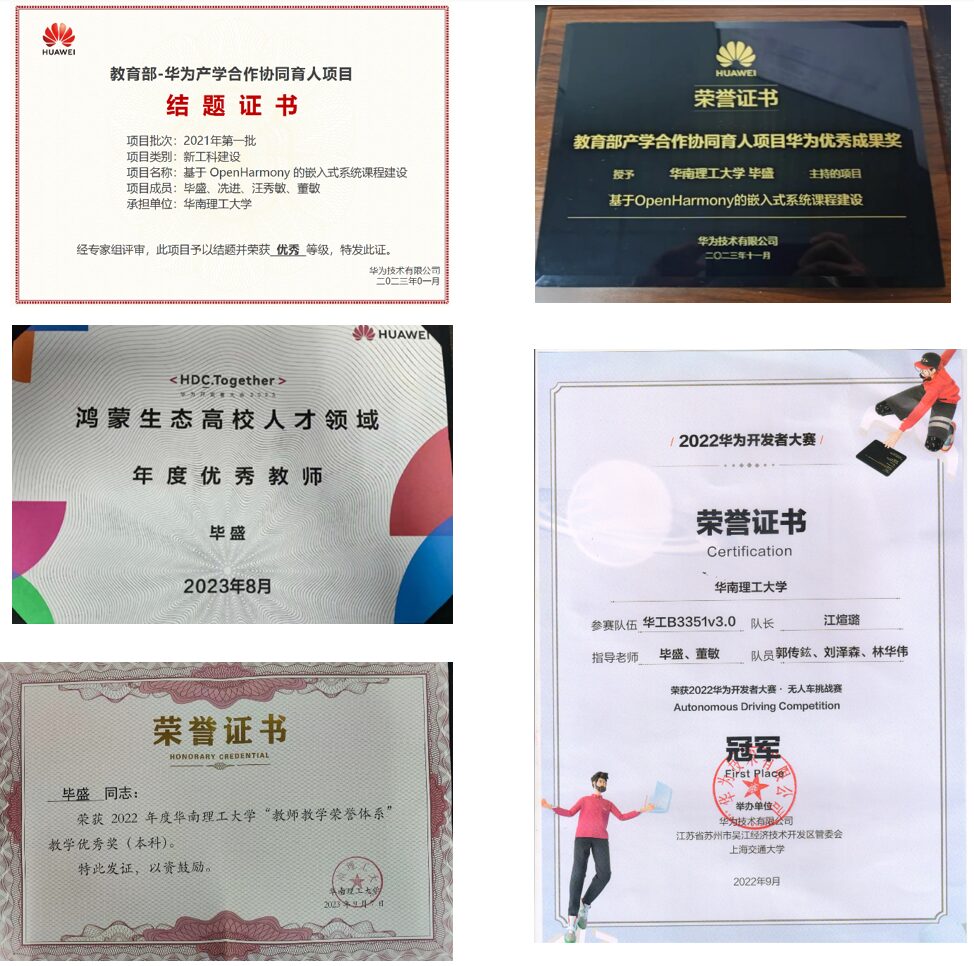
Application and Promotion Situation
Huawei provided a communication platform for the “Construction of Embedded System Course Based on OpenHarmony” to promote the course.
(1) In August 2023, at the Huawei Developer Conference (HDC.Together 2023) University Talent Ecosystem Forum, I shared my practices and experiences on how the Harmony ecosystem can be integrated into the existing “Embedded System” course teaching system. By introducing Harmony ecosystem technology as a case into the classroom, various innovations were made in teaching design, improving the teaching quality of embedded systems and enriching the teaching content.

(2) In January 2024, the first phase of the OpenHarmony Star Plan – Embedded System Development Course Teacher Training was held in collaboration with a national advanced training class for computer course capability enhancement. Through pilot theoretical and experimental cases based on the OpenHarmony operating system at South China University of Technology, I provided 12 hours of core content for participating teachers, including overall architecture of the OpenHarmony operating system, environment setup, system porting and adaptation, ArkUI, and application cases.
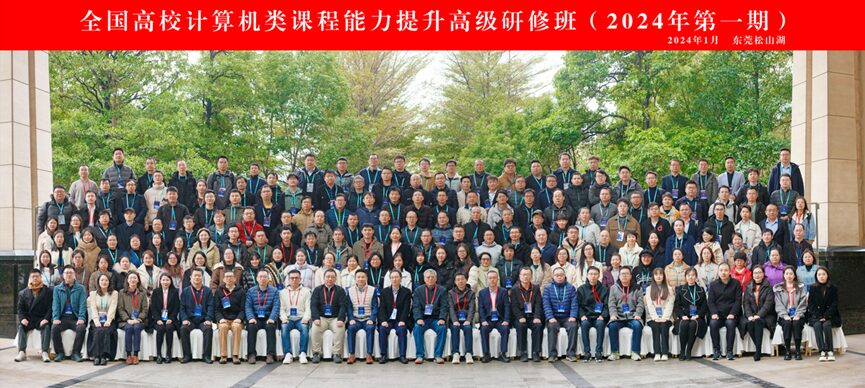
(3) In August 2024, at the Huawei Developer Conference (HDC), I shared the experience case of industry-education integration based on OpenHarmony in the evangelist roundtable meeting and received the first batch of evangelist certificates from Huawei.
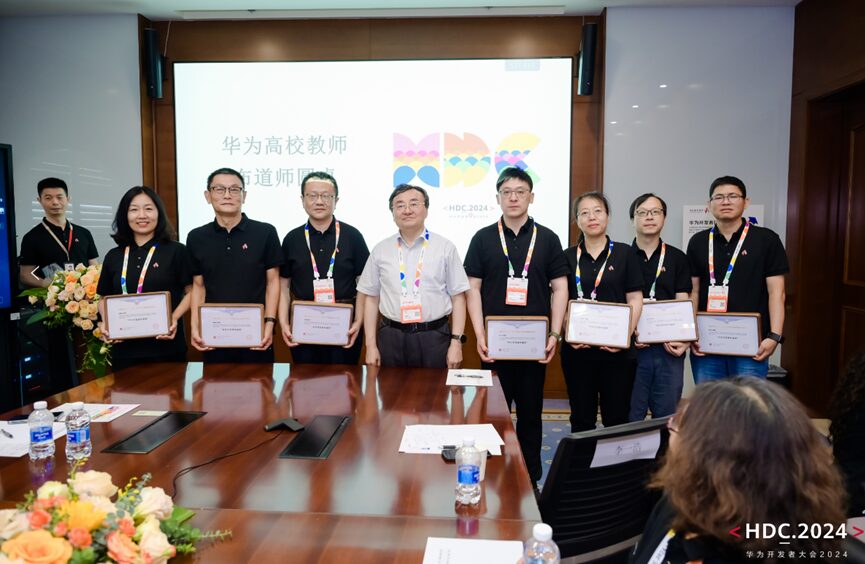
Experience Summary
1. Key Factors for Success
(1) Close industry-academia-research cooperation: Enterprises deeply participate in curriculum design, teaching implementation, and project guidance, providing practical application scenarios and needs. Universities play a leading role in curriculum setting and teaching organization, ensuring teaching quality.
(2) Course design combined with actual needs: Course content closely aligns with industry demands, setting projects with practical application value. Understanding market needs through enterprise research, adjusting and optimizing course content.
(3) Project-driven teaching: Allowing students to learn and apply embedded system knowledge through actual enterprise projects.
(4) Evaluation system aligned with enterprise standards: Establishing a diversified evaluation system, including project completion, practical performance, and enterprise mentor feedback. Evaluation standards align with actual enterprise needs, ensuring students’ abilities meet enterprise requirements.
2. Experience Insights
Close cooperation and resource integration are required for industry-academia-research collaboration, necessitating tight collaboration among all parties, resource sharing, and jointly promoting course development. Combining the advantages of various resources can maximize course effectiveness.
Demand-oriented and dynamic adjustment: Course design must closely align with market needs, maintaining flexibility to adjust according to industry changes at any time. Regularly conducting enterprise research and feedback to keep the course cutting-edge and practical.
Balancing practice and theory: Enhancing students’ hands-on abilities and practical experience through actual projects and case teaching. Combining theoretical teaching with practical operations is essential to cultivate compound talents that meet market demands.
3. Improvement Measures
With the rapid pace of technological updates, course content is challenging to keep up with the latest technological developments and market demands. Therefore, universities need to establish closer cooperation mechanisms with enterprises, facilitate resource sharing among enterprises, schools, and research institutions, increase the depth of enterprise participation in course design and teaching, and enhance the construction level of training bases and laboratories.